He whispered ‘mango’ in my ear. I was thirsty and told him 'I’d love some mango'. Much to my puzzlement, the mango never came. Later I found out that he was not referring to a piece of fruit but was telling me he found me attractive. But I didn’t need to know these colloquialisms to feel sexy as I was gliding around a dance floor in the arms of a strong snake-hipped Cuban man named Rafael.
Our hips moved in sync to the frantic beat, pelvis touching, he twirled me like a spinning top before arching me back. I felt elegant, sensual and like a complete blagger. He had little English but he could count from one to seven and by intonating at specific times he managed to keep me from being the left footed dancer I really was.
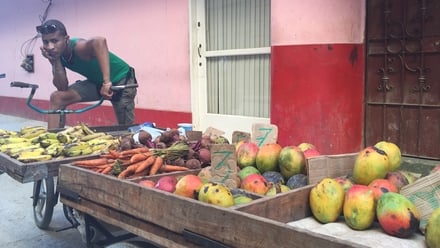
Just seven days before I was a salsa novice and I shamed myself publicly by dancing on stage with the Buena Vista Social Club. Championed by Ry Cooder they released just one studio album in 1997 which managed to reach worldwide sales of 9 million and was the background music in every Irish restaurant in the coming years. The band that I saw in the Havana Cafe was led by trombonist Jesus “Aguaje” Ramos who is one of the few surviving members of the original collective. I bopped unselfconsciously by my seat before my friends and I were reluctantly swooped up on stage to dance before the audience. An enjoyable gig quickly turned into an exercise in humiliation. If only I was able to dance.

It was a baptism of fire but it turned out that the learning curve for salsa dancing is very short, that is of course if you spend as much time as I did on the dance floor. Cubans are innately musical and dancing seems to be a part of their DNA. Despite my inexperience I had more than enough offers from local men who were happy to play dance teacher. It was exciting to have a man cross the club floor and ask me to dance; an alien concept reminiscent on 1950s Ireland.
But it’s not just the harking back to old-time ballrooms that brings one back in time. Cuba is in a time warp of 1959, the year when the USA began its economic embargo on the country. Last December, President Obama relaxed these restrictions, and things are set to change. But for now, go to Cuba if you want a break from 21st-century living.
Brightly coloured classic American cars roam the roads, there is little traffic, bicycles are plenty and it’s not unusual to see a horse and cart. For the entirety of my trip my phone didn't have coverage and Wi-Fi was scarce. So my holiday turned into an inadvertent technology fast, which after initial anxiety turned out to be liberating.
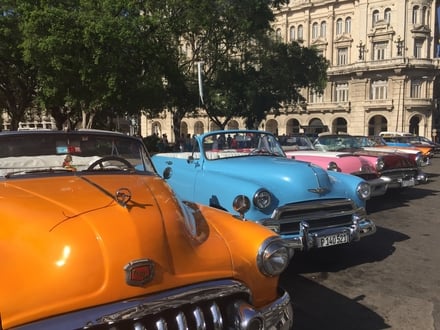
Havana has an infectious energy that hits you as soon as you touch down. Its sleepy narrow streets are filled with the spluttering of classic American cars and are bathed in a stunning Caribbean light. The pavements are dotted with characters enjoying cigars and shooting the breeze. Crystalline Caribbean waters met crumbling grandeur. The 8 km promenade called the Malecón is always buzzing with condoling couples and fishermen. And then there is the music, there is always the music in Cuba.
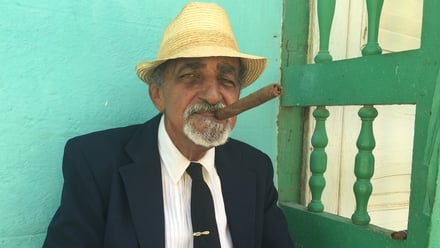
No matter where you are in the island the beat is consistent. Cuban music is influenced heavily by the Spanish guitar and the West African drum. Most towns and cities have a Casa de la Música (House of Music) where big band salsa and traditional Cuban music are performed for willing dancers.
The Casa de la Música in the UNESCO protected city of Trinidad is an open air salsa club packed with locals and tourists of all ages. Even if you're foolish enough not to dance, a great night can be hand just sitting on the steps, sipping on a mojito and watching the couples twirl and spin.
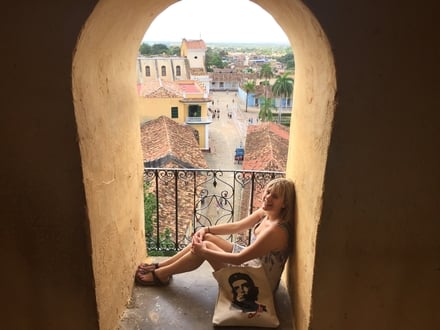
Thankfully I had a dance lesson in Casa Jesus before we hit the town, so didn’t shame myself like I did in Havana Cafe. Casa Jesus is a Casa Particular which means ‘private house’ and similar to Irish B&B’s. They vary in standards but many are in colonial mansions which huge rooms and lots of space. The average price per room is €25. The best thing about staying in a Casa Particular is that you get to stay and connect with a Cuban family. Or if you stay in Casa Jesus, you might even get a dance lesson in the courtyard.
Trinidad offers a lot aside from dancing. It’s a sleepy sixteenth-century town and is one of Cuba’s more preserved colonial settlements. Situated between beach and mountain it has a village feel. People walk at a slow pace on its quiet cobbled streets and locals sit on the doorsteps of their pastel painted houses. Just a short drive from the old town is Playa Ancon which has a long stretch of gold sand where you can snorkel and dive. Thankfully the beach is not spoilt by over development yet. If you're lucky you will catch the ‘coconut man’ who rides up and down the strand on his horse and cart selling fresh coconut.
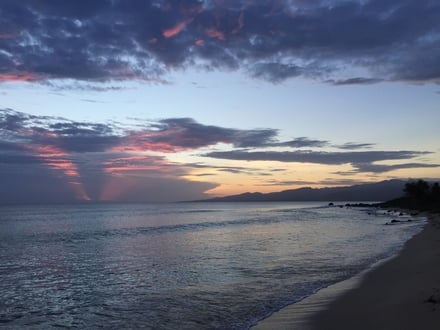
There is nowhere that the salsa beat is as ubiquitous as in Cuba’s second city, Santiago de Cuba. On the surface the city is a bit grimy; it's hot, full of hustlers and noisy. But these things add to the city's distinctive character. Its vibrant music scene is unparalleled in Cuba and it hosts a big carnival every July. Bands jam on the street and salsa and rumba beats waft from the rooftops of the Casa Particular’s. The rooftops are multifunctional spaces which double up as restaurants and classrooms for dance and percussion lessons.
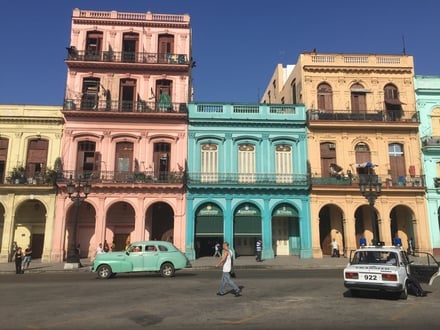
As Santiago de Cuba was the cradle of the revolution there are many interesting historic sites. The most interesting is Moncada Barracks, where Fidel Castro and his revolutionaries waged armed attacked against the government in 1953. These attacks are considered as the start of the Cuban Revolution.
But it was on the dance floor of the airy club Cala Queta in Santiago de Cuba where another revolution of sorts was born. While dancing hip-to-hip with Rafael, I realised that we humans are born to dance and that Cuba could possibly be the best place to learn. Another thing changed then too, now I only eat mango with a smug smile on my face.
Words and pictures by Deirdre Mullins
Deirdre Mullins travelled with Intrepid Travel on a 9-day Cuba Music and Dance trip. Prices start from €1,095 per person including accommodation in guest houses (Casa Particulars), transport, selected meals and activities. International flights are extra. Book at www.intrepidtravel.com or call 1800 939 124.


